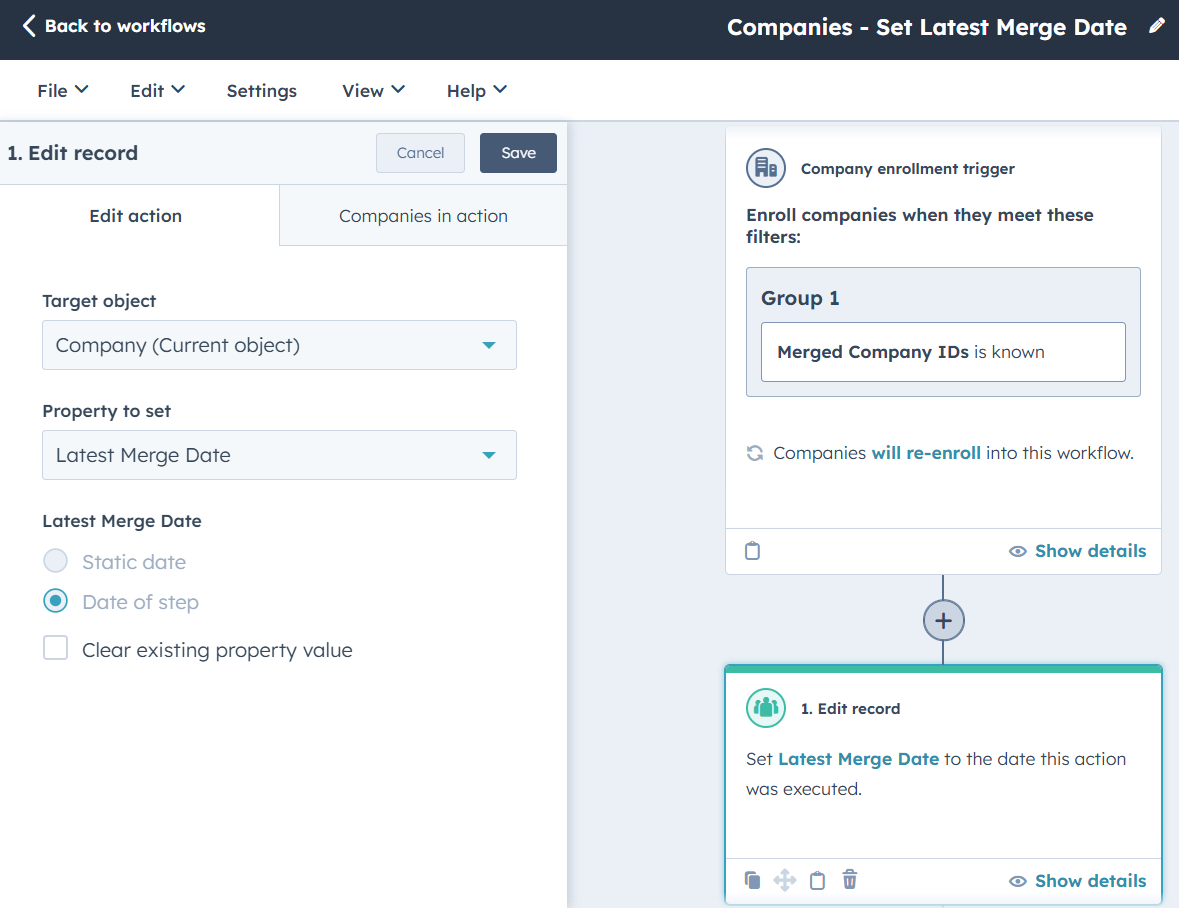Keeping your contact and company data clean is one thing, but tracking how often and when merges happen is a powerful way to maintain CRM visibility and control.
With just a few simple steps, you can create a system to monitor merge activity in HubSpot using a custom “Latest Merge Date” property, an automated workflow, and a report. This process gives you real-time insight into how often duplicates are being resolved, and by whom.
Let’s walk through it!
1) Create a "Latest merge date" property
Start by creating a new property called "Latest Merge Date" for both contacts and companies:
- Navigate to your HubSpot property settings.
- Make it a "date picker" property

2) Build a workflow to update the "Latest merge date" property
Next, let’s set up a workflow to automatically update the "Latest Merge Date" property:
- In your HubSpot account, click the Automations > Workflows in the main navigation bar.
- Click Create workflow and select the option From scratch
- Choose either Contact-based or Company-based, start with a Blank workflow and click Next
- Set an enrollment trigger on the Merged Company IDs is known.
- Enable re-enrollment to capture updates as needed.
- Click on the ➕ plus icon to add a workflow action
- Select Edit Record from the CRM actions group.
- Choose "Latest Merge Date" as the property to update, set the value to Date of step, and click Save.
- Review and publish the worklfow.
That’s it! Now your workflow will automatically track and log merge dates for contacts or companies.

3) Create a report to track merges over time
Finally, create a report to visualize how many merges occur over time:
- Create single object report (Contact or Company)
- Under Data - select the following properties:
- Latest Merge Date
- Apply the following Filters
- Create date is all time
- Latest Merge Date is known
- For visualization, select a Column Chart and configure:
- X-axis: Latest Merge Date
- Y-axis: Count of Companies or Contacts
- Frequency: Weekly or Monthly
This gives you a clear view of merge activity over time — great for tracking data cleanup progress or auditing deduplication initiatives.

Final Thoughts
Tracking merges helps you stay proactive with your data hygiene efforts.
With this simple setup, you gain visibility into when records are merged, and how often.
Want to take your merge management even further?
-
📘 Ultimate Deduplication Guide — for best practices and workflows
-
🔁 How to Merge Contacts in HubSpot — step-by-step contact merging
-
🏢 How to Merge Companies in HubSpot — avoid losing context when merging companies
Need help getting this set up? Let us know, we’re here to help streamline your deduplication strategy.
